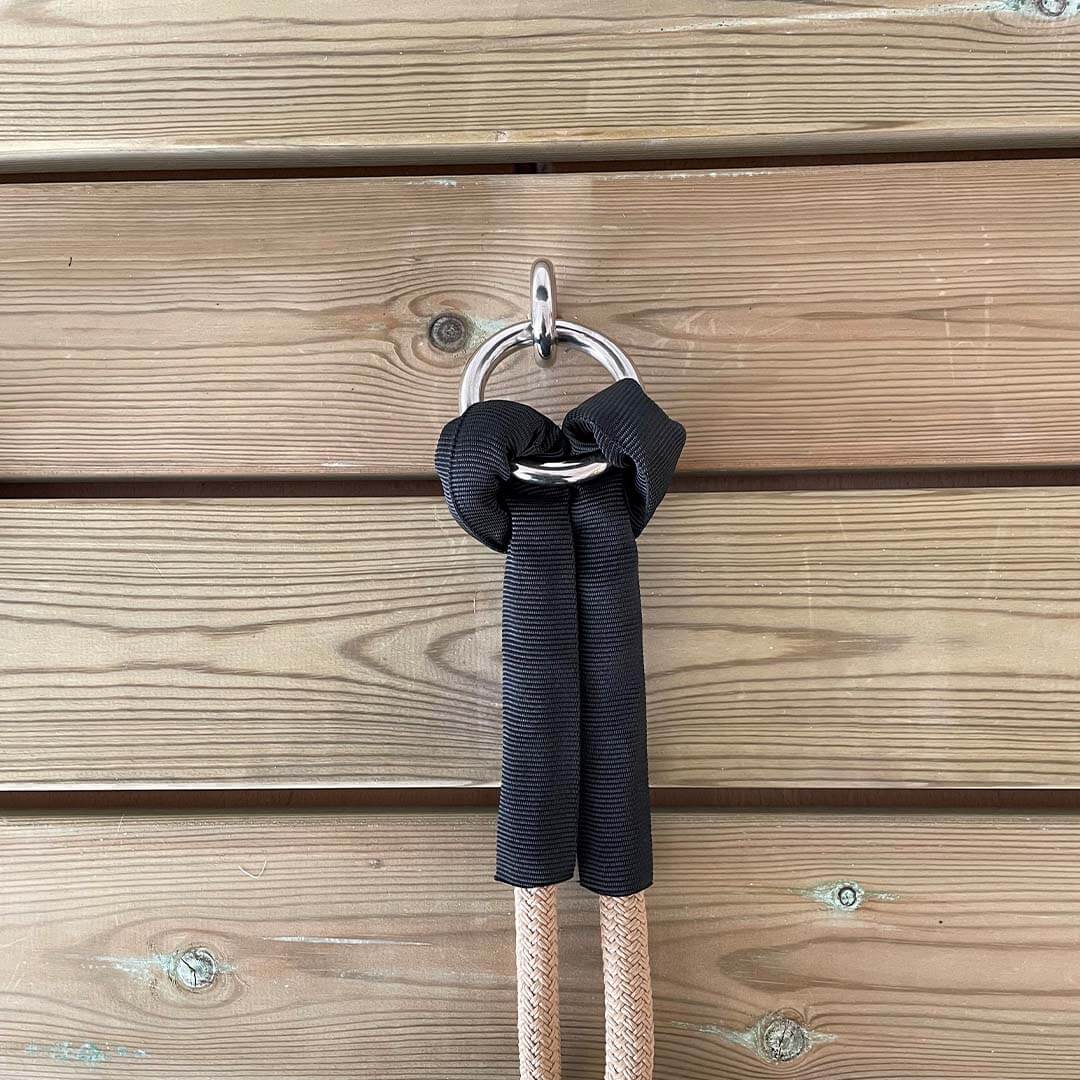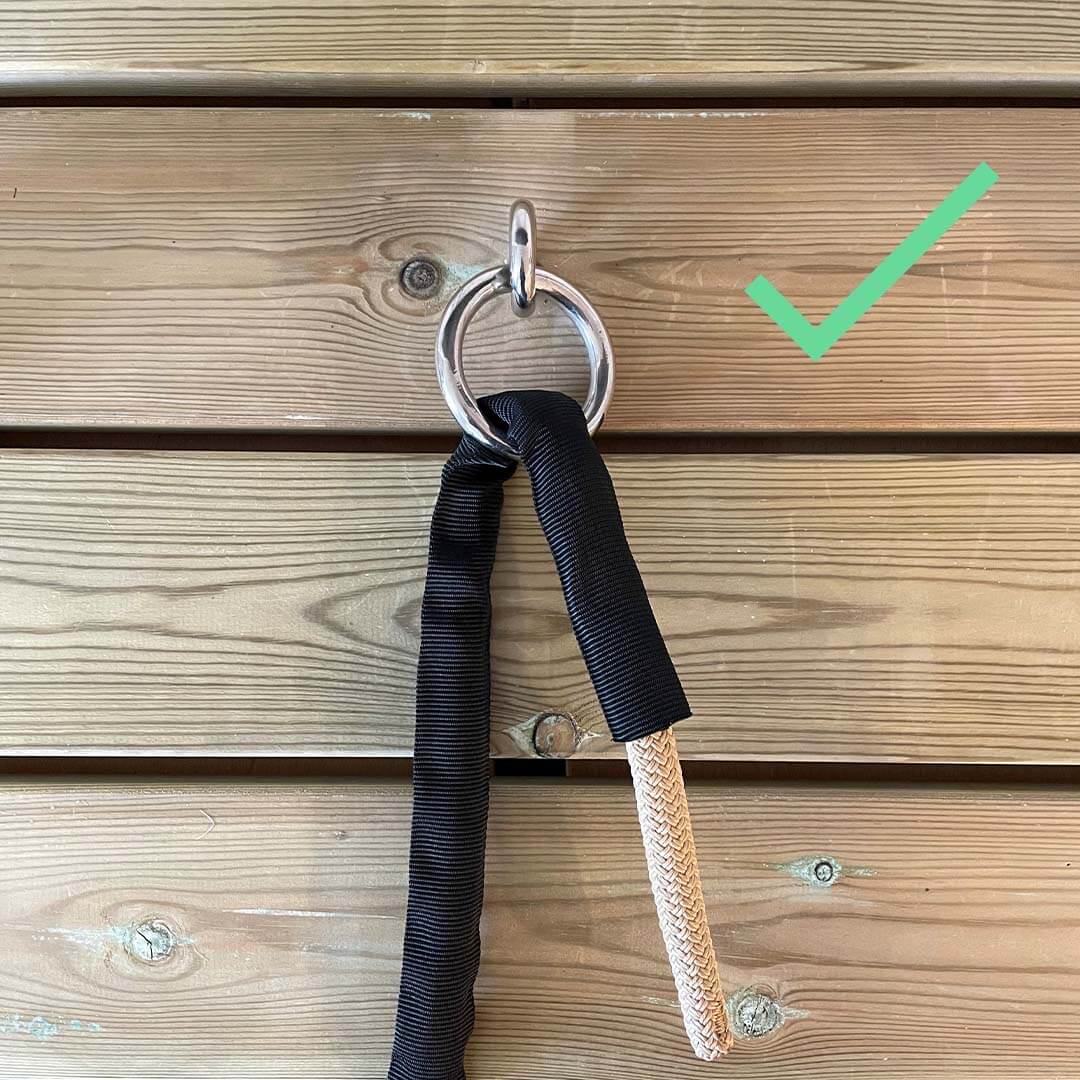Docking/mooring your boat for a storm
Always mooring your boat for storms is a good old maritime rule that should be followed. It is very important to dock your boat properly and correctly so it can not escape and drift out to sea or out on the lake. Remember that different ports, docks and other situational occurences can vary significantly and therefore what is best practice at one site may not be best practice at another. Also, remember that mooring a boat can be difficult even for the most experienced.
Cordage/line
The line used when docking/mooring should have the correct dimension suitable to the boat’s weight. You can find which dimension is suitable for your boat under each respective docking line, see all the docking/mooring lines we offer here. The line should be able to withstand chafing, jerking and the sun’s UV-damage.
Our innovative docking lines Storm & StormX are equipped with two pieces of wear protection, one at the eyelet and an adjustable one along the line in order to provide maximum protection against chafing.
StormX has a braided casing consisting of 100% polyester silk which is optimal as this material sinks in water and you wont need to worry about a boat neighbor crossing over your line. The material is also maximum UV-protected. This docking/mooring line has an elastic core which means you do not need any additional shock absorbers, thimbles or shackles. It also works excellently when mooring (long-term).
Storm is a 3-stranded line made of 60% polyester and 40% shock absorbing fiber. The entire line length consists of this shock absorbing fiber which makes it extra durable and suitable e.g. when taking a boat through the lock. The docking line Storm has also won Best-in-Class several times.
If the docking line becomes damaged you need to exchange it immediately.
Dock without shackles or shock absorbers
With our Storm and StormX mooring lines, you don’t need an extra shock absorber when mooring because the lines themselves are shock absorbing. You also do not need to purchase any shackles when mooring if using our docking lines. Instead place the line through itself with the help of the eyelet. There is also wear protection which protects the line against chafing and other wear-and-tear.

Mooring at a dock
Mooring at a dock is usually done with the aid of Y-beams or bollards. When mooring/docking using a Y-beam you need to keep in mind whether it is one or two beams, as you can see illustrated below.








It is also important to keep in mind the water depth, which can vary significantly, when mooring/docking. Otherwise the strain placed on the line can become too much if e.g. the water level significantly lowers. If the water level increases there is risk of slacking lines and more movement of the boat.
When docking/mooring through a mounting it is important that the line always comes through the mount from below. See below image. This because the line can get caught under the mount when leaving the dock. Also keep in mind that the wear protection always should run through the mount in order to protect the line from chafing.


Docking/mooring boat between dock and buoy
When mooring at a dock with the help of bollards you need to make sure all of them are correctly and properly fastened/beaten down. Bollards located at the stern of the boat that are in deep water can move around which can in turn inflict damage on your boat.
When docking your boat at a dock with the aid of a buoy you need to know the water depth, which should not be more than 6m. If it is too deep the buoy chain becomes so long that the boat berth is difficult to control. Mooring/docking with a buoy should be avoided if many boats are located very close to each other at the same dock, in order to minimize the risk of the boats damaging each other.
When docking your boat with the aid of a buoy you need: a buoy weight with a loop bolt located at the bottom, chain or a docking line, a buoy that can easily carry the chain but not so big that it is pulled the surface during heavy strain.
Investigate the sea/lake bottom thoroughly before sinking the buoy weight so there are no major inclines/declines or any rocks under the boat. If there are this can make the buoy move to a different depth if the sea/lake bottom shifts.
Also remember to always use fenders. Here you can find the fenders we offer.
Click here to watch a video on how to dock between Y-beams.
Choosing the right dimension of the mooring line
Read our article on how to choose the right dimensions for your mooring line.
Do you want help with what docking/mooring line that is best suitable for your boat?
Take our docking quiz and our docking expert will get in touch with you to provide recommendations on what lines are best suited for your boat and docking/mooring situation.
Definition list:
- Cordage: a term for different types of longer, connected bundles such as rope or lines.
- Bollard: An apparatus used when docking to fasten the docking/mooring line at, usually placed in line with boat bow and stern.
- Shackle: A U-shaped bracket/bolt where the ends are connected with a pervading screw.
- Cleat: Apparatus for fastening smaller lines such as halyards and sheets.
- Fairlead: A fitting to lead the docking line and maintain its position on the railing.
- Fairlead (anchor): A fitting through with the anchor line is led through.
- U-bult: U-shaped bracket/bolt with threads and nuts, where a line or chain can be fastened.
- Screw eyes: Bolt with threads and an eye, where lines or chains can be fastened.
- Ring bolt: Bolt with eye and ring where lines and chains can be fastened.
- Thimble: Chafe/wear-and-tear protection for eyelets on cordage, made of steel or plastic.
- Buoy rod: Pervading rod through buoy with an eye at each end.
- Grapnel: A type of anchor that can be folded together.
- Swivel: Apparatus that allows two objects to rotate independent of each other.
- Mushroom (anchor): Smaller anchor, shaped like a plate or a mushroom hat, with a rod where the anchor line is fastened.
- Splice: A way to fasten lines together or in on iself by braiding the strands under each other.
- Spring: Head spring and aft spring, extra docking/mooring lines running diagonally between the dock and the bow and stern.
- Swinging mooring: Swinging mooring means only being docked/moored at a single point such as a buoy or via anchor only.

